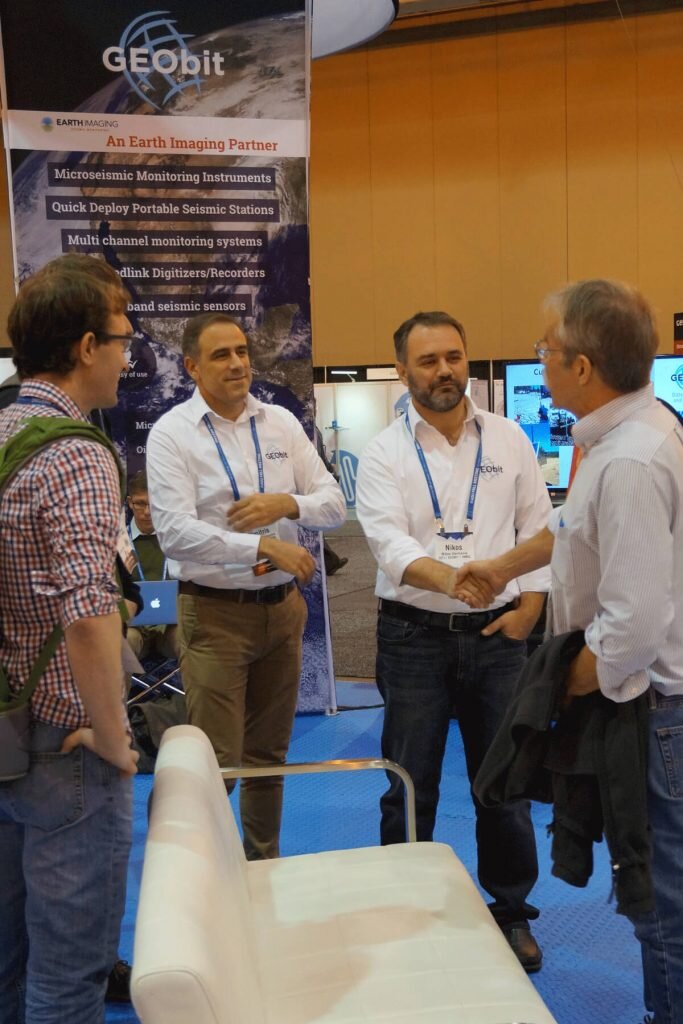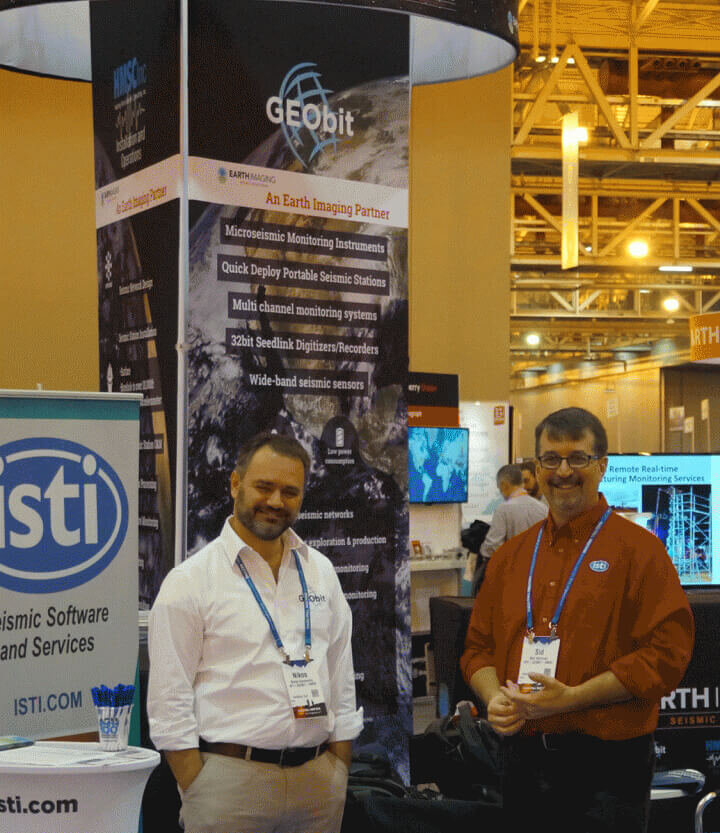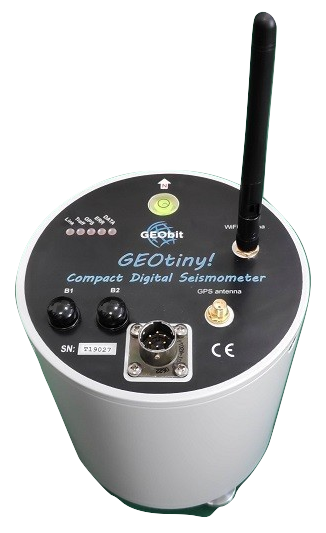ISTI at AGU 2020 Online
Yasmine: A new Tool for Station XML Management
Missed AGU 2020?
Here’s what we covered
ISTI and GEObit meet and greets, beer hour, one-on-one scheduling
Poster by ISTI & and others, Yasmine: A New Tool for Station XML Management
Check out more of our Yasmine videos on ISTI’s YouTube channel.
+ Our Yasmine Poster
Yasmine: A New Tool for Station XML - Management S046-0004 Monday, 14 December 2020 Poster
Abstract:
The International Federation of Digital Seismograph Networks (FDSN) Working Group II was tasked with updating the representation of seismic metadata. As a result dataless SEED volumes are being replaced with StationXML, a modern XML schema that extends the SEED representation of metadata. Today, most of the worldwide seismic data centers, including the entire EIDA framework, are already distributing metadata in StationXML format. While some client-side software (e.g., ObsPy) exists for reading StationXML, there are relatively few standalone and dedicated solutions available for metadata producers to generate and edit StationXML. Here we describe a tool for the creation and management of StationXML, called “yasmine” (Yet Another Station Metadata INformation Editor), created with support from IRIS and RESIF and developed by ISTI.
This software, with a web-based GUI, offers the user the ability to create and edit native StationXML metadata. It offers the ability to create channel responses from scratch using templates in both the IRIS Nominal Response Library (NRL) and a new Atomic Response Objects Library (AROL). The NRL/AROL wizard in yasmine allows the user to browse these generic instrument libraries and select the sensor and datalogger at the site, which in turn generates the full (combined) response. The tool uses ObsPy Inventory python objects (Station, Channel, Response, etc) in the backend and persists collections of these objects in a persistent, user-defined database. Existing StationXML may be imported, saved into network, station, channel and response templates and stored in user-defined libraries for future use. Channel responses may be readily plotted in the tool for confirmation. A complete set of metadata can be created at once with Network, Stations, and Channels via a single Network Wizard. Otherwise the user can use the Station Wizard or the Channel Wizard to easily build up their metadata in a station by station or channel by channel manner.
In addition to the web-based GUI, a full set of command line options allows users to create their own batch scripts to drive yasmine’s StationXML editing capabilities including StationXML file splitting/merging, batch modification of objects, insertion of objects at various levels, and more.
The software has been released under the GNU GPL v3 licence.
Authors Sidney B Hellman1, Jean-Marie Saurel2, Robert E Casey3, Mike Hagerty4, Stefan Lisowski5, Constanza Pardo6, Helle Pedersen7, Catherine Pequegnat8, Tim Ronan9, Oleksandr Sukhotskyi10, Mary E. Templeton11, Chad Trabant12, Serhiy Vasilyev10 and David Wolyniec13, (1)Instrumental Software Tech Inc, Saratoga Springs, NY, United States, (2)Université de Paris, Institut de Physique du Globe de Paris, Paris, France, (3)IRIS DMC, Seattle, WA, United States, (4)Instrumental Software Technologies, Inc., Saratoga Springs, NY, United States, (5)Instrumental Software Technologies, Inc. (ISTI), New Paltz, NY, United States, (6)Université de Paris, Institut de physique du globe de Paris, Paris, France, (7)ISTerre Institute of Earth Sciences, CNRS, Université Joseph Fourier, Grenoble, France, (8)ISTerre Institute of Earth Sciences, Grenoble Cedex 9, France, (9)IRIS Data Management Center, Seattle, WA, United States, (10)Instrumental Software Technologies, Inc., Vienna, Austria, (11)Incorporated Research Institutions for Seismology, Seattle, WA, United States, (12)IRIS Data Management System, Seattle, WA, United States, (13)CNRS, Institut des Sciences de la Terre, Grenoble, France
Missed AGU? We’d still love to be of service. Send us a message to discuss your goals.
“We are a team providing a complete seismic monitoring solution.”
Instrumental Software Technologies, Inc. (ISTI)
Monitoring and Data Processing
ISTI specializes in developing custom data acquisition, analysis, and processing software for the geophysical sciences. Microseismic data acquisition and processing are performed by custom solutions using existing open source software as a foundation, saving our customers both time and money. ISTI provides several products and services covering all geophysical applications and monitoring needs of the industry.
Geobit Instruments Ltd.
Data Loggers and Sensors
GEObit provides high sensitivity wide-band and near broadband seismic sensors, surface or borehole type, and high dynamic range, low power 32bit ADC data loggers with local data storage and real-time telemetry over seedlink protocol. We are focusing on low power and cost-effective solutions so we provide to our customer seismic networks with low installation and maintenance costs. Our instruments are ideal for local and regional seismicity and micro-seismicity monitoring and for seismic events such as those induced by unconventional hydrocarbon extraction. Our high fidelity data-loggers ensure that these signals are recorded with the highest resolution and timing accuracy.




What We Can Do For You
With 65+ years of combined experience, ISTI and GEObit are joining forces to become the most competitive and fastest-growing joint venture group in the seismic monitoring services industry.
Providing state-of-the-art seismic instruments, network design, installation techniques, and data monitoring and processing services, our group can deliver a cost-effective total solution to the energy exploration & production industry, especially to the oil, gas, and geothermal sector. Our key benefits are that we produce in-house hardware and software while installing and maintaining the microseismic monitoring network to ensure a high level of data quality and availability. In other words, we make the technology – we apply the technology – we offer the technology.
We have worldwide experience, having installed and operated seismic networks worldwide, from Indonesia/Papua jungle to the Middle East desert, from Alaska glaciers to the Himalayan Mountains. In the USA, we are currently running many dedicated microseismic monitoring projects, with over 200 stations installed in the past ten years.
“GEObit Equipment + ISTI Software: A Complete Solution”








